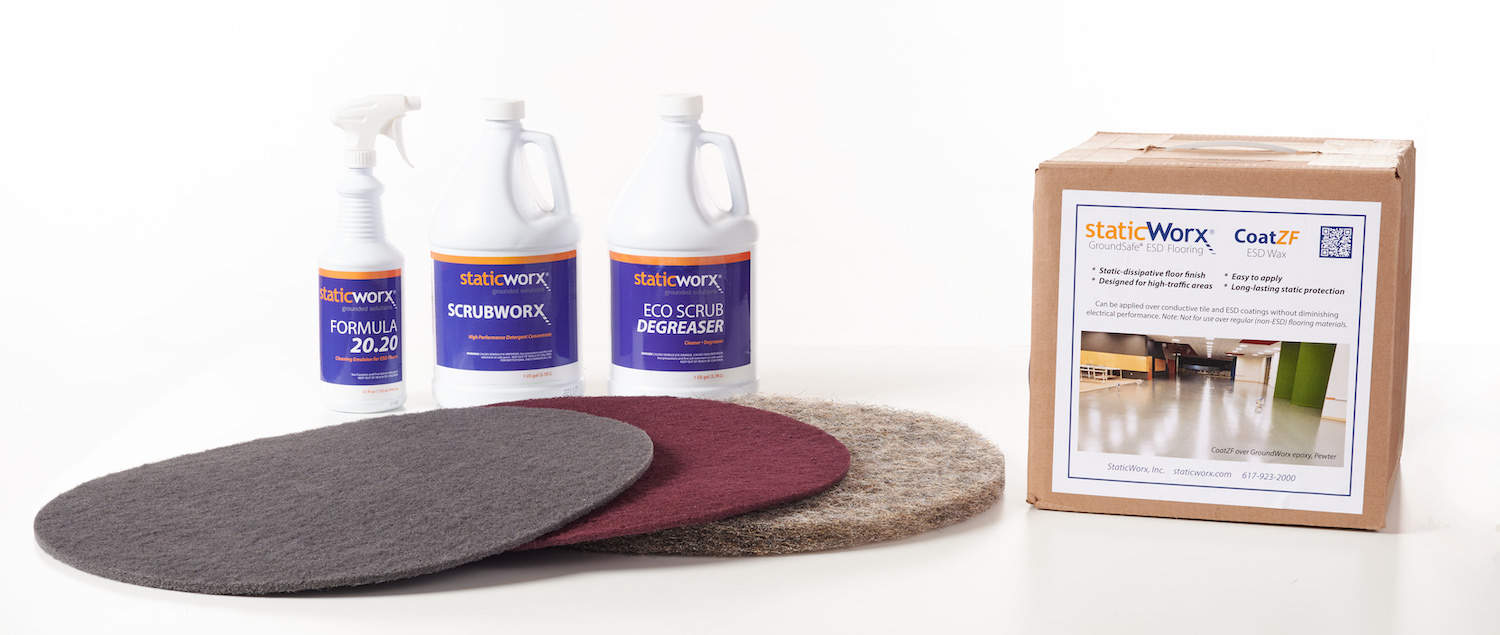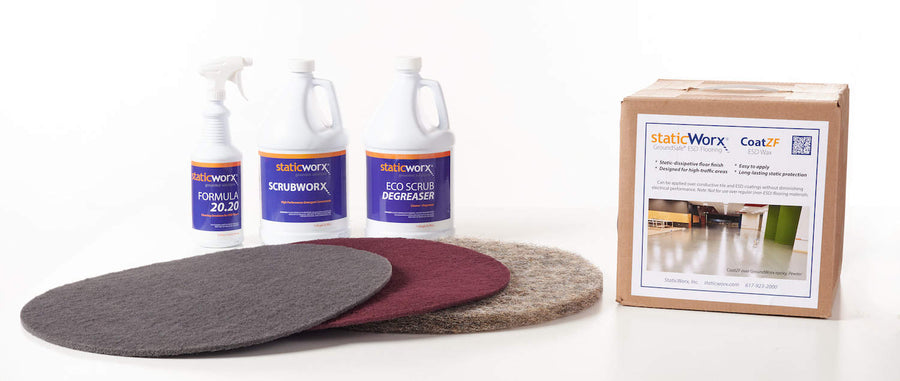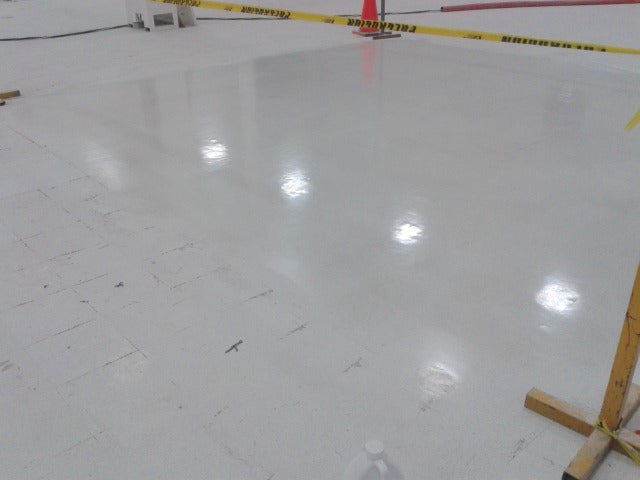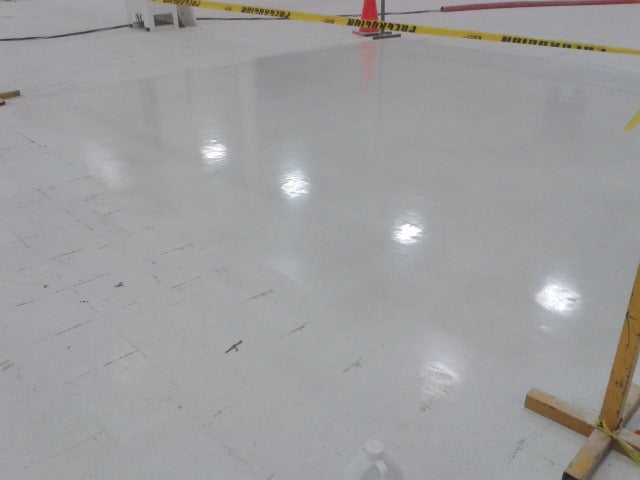For Your ESD Floor to Protect Electronics It Has to Be Clean
Electrostatic discharge (ESD) is a phenomenon that occurs when two objects with different electrical charges come into contact and separate. The friction from their separation generates a sudden jolt of electrical current. If the discharge occurs near sensitive electronic equipment, it can cause loss, damage or even failure.
In industrial and electronic manufacturing facilities, as well as end-user environments such as critical call centers, PSAPs, flight towers, financial institutions, media or IT rooms, data centers – any type of business that relies on high-speed electronics - ESD can be a significant problem. An ESD floor helps to eliminate random ESD events and mitigate the risk of ESD damage. One of the most important steps you can take to ensure that your ESD floor is performing properly, protecting against ESD, is to keep the floor clean.
What is an ESD Floor?
An ESD floor is a special type of flooring designed to help dissipate static electricity. These floors are electrically grounded and made from materials that have electrical conductivity, such as conductive or static-dissipative carpet, vinyl, rubber or epoxy. Grounded floors are designed to provide a safe path for static electricity to flow to an earth ground, preventing the buildup of static charges that can cause ESD damage.
Does cleaning an ESD floor make it work better?
While an ESD floor is designed to help prevent random ESD events, it is not foolproof. Dust, dirt and other contaminants insulate shoe soles from the conductivity in the floor. This prevents the ESD floor from dissipating static charges to ground, compromising its electrical performance, reducing its effectiveness, running the risk of a harmful ESD event.
Here are some reasons why cleaning your ESD floor is important:
1. Prevents Buildup of Contaminants
ESD floors are designed to be antistatic, which means they should not create a static charge. Dust, dirt, or other particles can create a static charge on the surface of the floor. This static charge can then transfer to people or equipment, increasing the risk of an ESD event. By cleaning your ESD floor regularly, you can prevent the buildup of contaminants and reduce the risk of ESD damage.
2. Maintains Proper Electrical Conductivity
ESD floors are designed to have a specific level of electrical conductivity, depending upon the application. This conductivity helps to dissipate static charges and prevent the buildup of ESD when people walk on the floor. A layer of dirt and grime can insulate shoe soles from the conductivity in the floor, reducing its electrical conductivity - in other words, increasing its electrical resistance to ground. By cleaning your ESD floor regularly, you can help maintain its proper level of electrical conductivity and ensure that it can effectively transport static charges to ground, inhibiting random ESD events.
3. Extends the Life of Your ESD Floor
While ESD floors are designed to be durable and long-lasting, they can still be damaged by dirt, dust, and other contaminants. Over time, contaminants can build up on the surface of the floor, causing scrapes, scratches and other damage. By cleaning your ESD floor regularly, you can help extend its life and ensure that it continues to provide effective ESD protection for many years.How to Clean Your ESD Floor
Cleaning an ESD floor requires a slightly different approach than cleaning a standard floor. Here are some tips for cleaning your ESD floor:
1. Use the Right Cleaning Products
It is important to use cleaning products that are specifically designed for ESD floors. Products like StaticWorx EcoScrub degreaser, ScrubWorx neutral pH cleaner and Formula 20.20 cleaning emulsion are specially formulated to clean the floor without damaging its electrical conductivity or antistatic properties.
2. Use a Neutral pH Cleaner
ESD floors are sensitive to high or low pH cleaners, so it is important to use a neutral pH cleaner like StaticWorx ScrubWorx. Using a neutral pH cleaner helps to protect the floor's surface and ensure that it remains effective at preventing ESD.
3. Avoid Abrasive Cleaning Tools
Abrasive cleaning tools like steel wool or abrasive scrubbers can scratch or damage the surface of an ESD floor. To avoid damaging your floor, be sure to use the proper/recommended scrub pad or mop.
4. Clean Regularly
Cleaning your ESD floor should be a regular part of your maintenance routine. Depending on the level of foot traffic and other factors, you may need to clean your ESD floor daily, weekly, or monthly.
Cleaning your ESD floor is an important part of maintaining a safe and productive industrial or manufacturing environment. By keeping your ESD floor clean, you help to ensure that the floor is free of contaminants, extending the life of your floor, and ensuring that it remains antistatic and retains its proper conductivity. A clean, well-maintained ESD floor protects your sensitive – and expensive – electronic components.
Link to share
Use this link to share the article with a friend.





